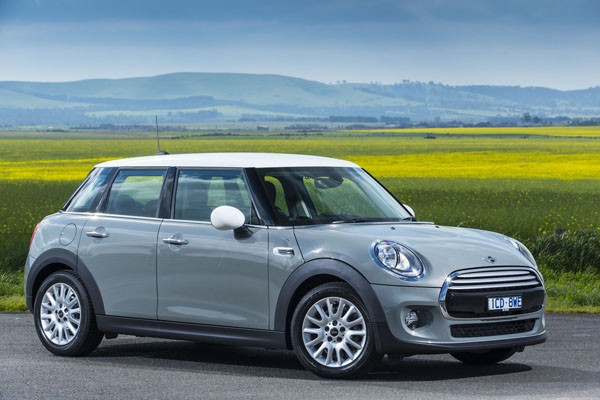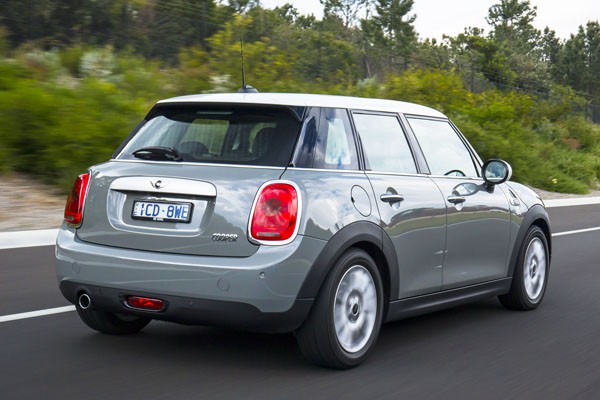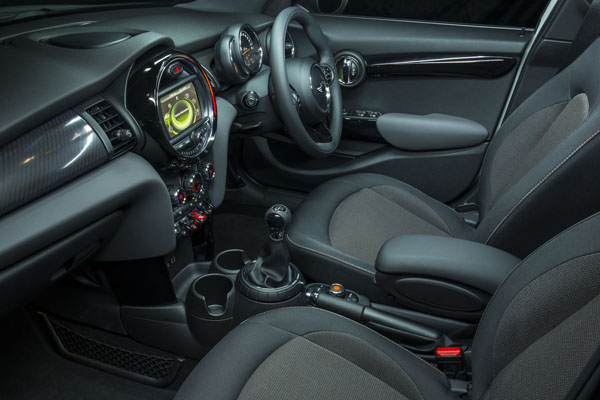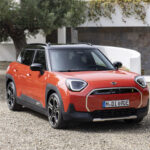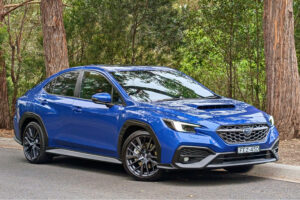Not to labour the point too much, but many original Mini owners, their families and friends, while not exactly in their dotage, can be physically challenged getting into the back of a three-door hatchback.
At the other end of the scale, young families with kids to accommodate in the rear seats face an awkward lift, especially with a squirming toddler or two. It makes sense, then, to ease both burdens by adding a couple of back doors.
This Mini has done that with its latest hatchback, without subtracting from the things that have adhered the model to several generations of supporters. There are no compromises on Mini’s distinctive looks, or trademark go-kart driving appeal.
Mini Cooper 5-door, the second body variant of the new third-generation premium small car, is priced from $27,750, $3900 less than the previous generation three-door Mini hatch.
It comes powered by a choice of a 1.5-litre TwinPower Turbo petrol (Cooper) and diesel (Cooper D) engines and range-topping 2.0-litre TwinPower Turbo petrol in the Cooper S. I sampled the top-of-the-list Cooper S.
STYLING
For lovers of the Mini, the exterior is sublime, with all the attributes they have come to appreciate – the planted stance with all four wheels at the corners, short overhangs front and back, and tapered rear window with roof-mounted spoiler making for agile handling.
Up to the A-pillar, the 5-door is the same as its sibling, while the floating roof is retained, adding a D-pillar at the rear to take the extra length. Longer by 161 mm and taller by 11 mm, the increased wheelbase (72 mm) adds 72 mm more rear legroom, 15 mm more headroom and 61 mm more width at elbow level compared to the three-door Mini.
The boot offers 288 litres of luggage space, 67 litres more than the three-door, while up to 941 litres of cargo can be accommodated with the 60:40 split rear seat backs folded.
INFOTAINMENT
For all but the Mini’s greatest fans the cabin can seem somewhat chaotic, with almost every form of instrument, dial, needle, switch, knob and screen scattered around the place. Then there is the ever changing Blackpool-style illumination. I’m ambivalent about the whole thing.
There are some positive moves, however. The speedo has been shifted from its traditional spot on the middle of the dashboard to directly in front of the driver, freeing up the old spot to display more information, including a range of interactive displays, depending on the model. Head-up display, Park Assist and reversing camera are on the Cooper S menu.
All Mini 5-doors are well equipped with dynamic cruise control, electric windows and mirrors, automatic windscreen wipers and lights, audio system with USB and Auxiliary inputs, Bluetooth connectivity, interior LED ambient lights package and rear fog lights.
The Cooper S adds automatic dual-zone climate control, Radio Mini Visual Boost with a 6.5-inch central display screen, Bluetooth with audio streaming, front fog lights and front armrest.
Further gains include leather/cloth combination upholstery, front sports seats and Mini Navigation System. Along with the upgraded display screen comes the Mini Controller, based on BMW’s iDrive system, to access infotainment, vehicle, communication and navigation.
ENGINE / TRANSMISSION
The 5-door Cooper S calls on a 141 kW 2.0-litre four-cylinder TwinPower Turbo petrol engine mated with a standard six-speed manual gearbox speeding the car to a claimed 100 km/h in 6.9 seconds. This is cut by 0.1 second with the optional Steptronic Sports Automatic transmission.
Various modern technologies are called on to limit fuel consumption. These include engine stop / start, brake energy regeneration, weight savings and aerodynamic advantages.
SAFETY
All Mini 5-door models feature high-end safety equipment, including six airbags, Dynamic Stability Control, Dynamic Traction Control with Electronic Differential Lock Control, ABS with Brake Assist, Electronic Brake Force Distribution and Cornering Brake Control, and rear Park Distance Control.
A strong, rigid body with clearly defined deformation zones is designed to absorb impacts and ensure maximum occupant protection. Also featured is a partially active bonnet that, in the event of an accident, is raised to increase deformation space to help reduce the risk of injury to pedestrians.
DRIVING
Needless to say, the Mini 5-door experience starts with getting seated, the added doors putting a smile on the face of many would-be occupants, although the Mini 5-door’s claim to be a true five-seater would be drawing a long bow.
Three in a row along the back would be an uncomfortably tight fit for shoulder space, while leg room depends heavily on the positioning of the front seats in relation to the occupants’ height.
Standard in the Cooper S is the Mini Driving Modes system which varies the driving characteristics in a choice of three modes – Mid, Sport or Green – by means of a rotary switch positioned somewhat awkwardly on the centre console behind the gear shift lever.
Reaching back the driver can engage Mid (also the default mode), which offers a middle-of-the-road driving experience balancing performance with fuel efficiency; Green increases the latter at the expense of performance through intelligent control of such things as air-con and use of the coasting mode in auto cars.
Sport puts a spurt on through greater throttle, steering and auto transmission responsiveness. Take up of the optional Dynamic Damper Control has the car gaining added agility.
On the motorway the Mini 5-door Cooper S came up with fuel consumption of 7.1 litres per 100 kilometres; in the city this blew out to as much as 10 litres per 100 kilometres.
SUMMING UP
Hanging two extra doors on its iconic hatchback can only add to the appeal of the Mini, attracting a hot new market previously left out in the cold.
AT A GLANCE
MINI Cooper 5-Door: $27,750 MINI Cooper D 5-Door: $32,900 MINI Cooper S 5-Door: $38,050
Note: These prices do not include dealer or government charges. Contact your local Mini dealer for drive-away prices.
FEATURES (Mini Cooper S 5-dr)
17in alloy wheels
Front sport seats
Cloth / leather combination upholstery
Black, chequered interior surfaces
Bluetooth mobile preparation with USB audio interface
Dual zone air-con
Chrome Cooper S side scuttles
Dual chrome exhaust tailpipes
Bonnet scoop
Radiator grille in Chrome surround with Black honeycomb insert
Front and rear fog lights
SPECIFICATIONS ((Mini Cooper S 2.0 litre TwinPower turbocharged petrol engine)
ENGINE
Capacity: 1.998 litres
Configuration: In-line 4-cylinder
Maximum Power: 141 kW @ 4700-6000 rpm
Maximum Torque: 280 Nm @ 1250-4750 rpm
DRIVELINE:
Drivetrain: Six-speed manual / Steptronic Sports Automatic transmission.
DIMENSIONS, WEIGHT AND CAPACITIES:
Length: 4005 mm
Width: 1727 mm
Height: 1425 mm
Wheelbase: 2567 mm
Seating capacity: 5
Cargo capacity 288 litres; 941 litres with rear seat backs folded
Fuel Tank Capacity: 40 litres
SUSPENSION AND BRAKES:
Suspension: Single-joint spring-strut front axle and multi-link rear axle
Brakes: Ventilated discs (front); solid discs (rear). ABS anti-skid brake system with Electronic Brake-force Distribution, Vehicle Stability Control. Traction Control
Steering: Power steering, Servotronic electronic speed-related
Wheels / tyres: Alloy 17in Tentacle spoke, 7 J x 17, 205/45 R17
PERFORMANCE
Acceleration 0 to 100 km/h: 6.9 sec / 6.8 sec
Top speed: 232 km/h
FUEL CONSUMPTION:
Fuel type: 95 RON unleaded
Combined Cycle (ADR 81/01): 6.0 (5.5) litres per 100 km. CO2 emissions 127 g / km
GREEN VEHICLE GUIDE RATINGS:
Greenhouse Rating: 8.0 / 10
Air Pollution Rating: 7.5 / 10




